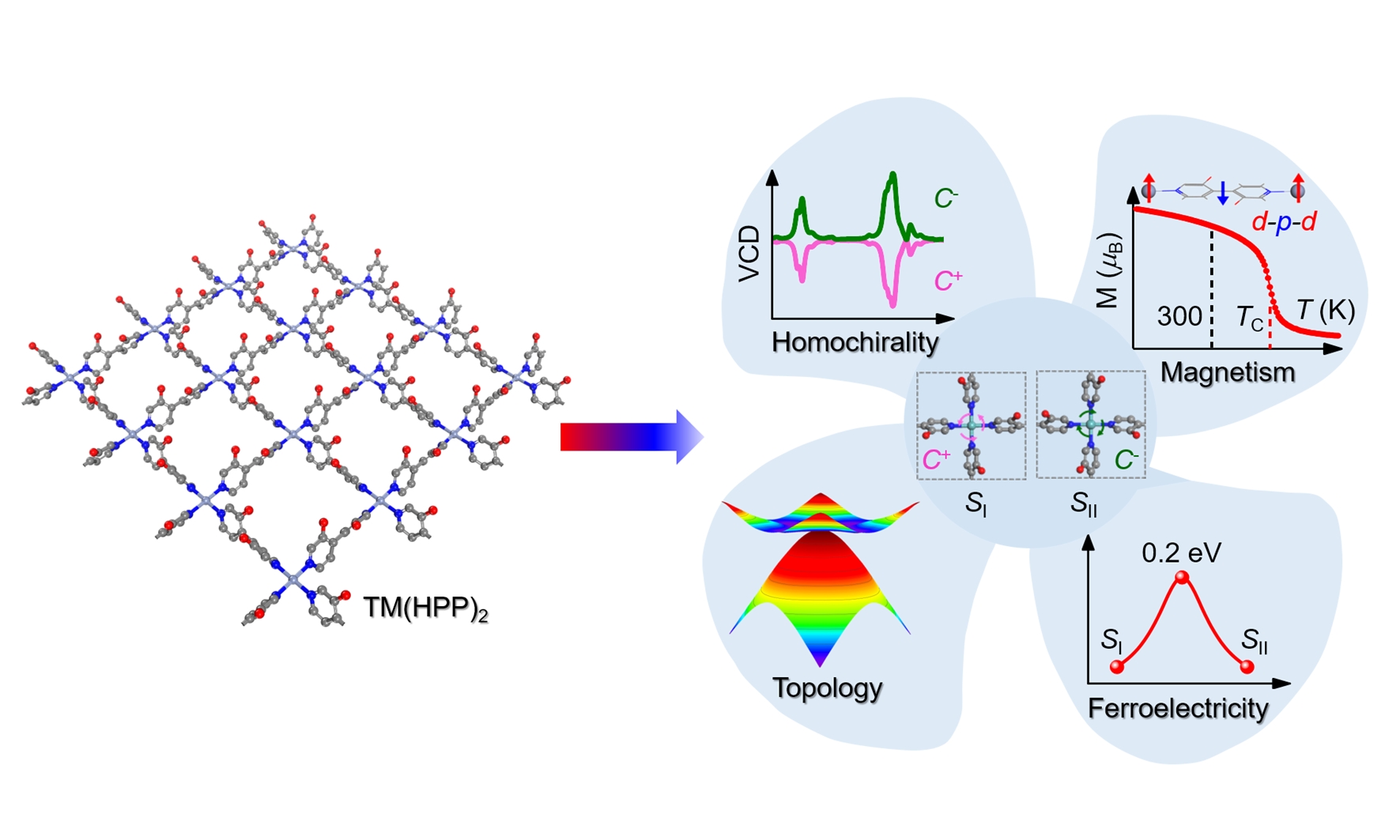
Recently, a research team led by Associate Professor LI Xiangyang and Professor WANG Xianlong from Institute of Solid State Physics, Hefei Institutes of Physical Science of the Chinese Academy of Sciences, and Professor LI Xingxing from University of Science and Technology of China, found a way to design a class of homochiral organometallic nanosheets that exhibit room-temperature multiferroic and topological nodes.
Related results were published in Nano Letters.
Multiferroic and magnetic topological materials are pivotal for the development of next-generation electronic information devices, yet they often encounter practical limits due to low Curie temperatures. Chirality, essential in fields like chiral sensing and molecular recognition, offers potential for enhancing these materials' multifunctionality, though research remains scarce. Notably, two-dimensional (2D) homochiral multiferroic and magnetic topological materials with room-temperature magnetic order are yet to be reported. Coupling chirality with multiferroic or topological properties is also an intriguing but challenging goal.
In this study, researchers predict a new class of homochiral organometallic nanosheets, where 4-(3-hydroxypyridin-4-yl)pyridin-3-ol (HPP) is used as an organic linker and transition metals (TM = Cr, Mo, and W) serve as the nodes. These TM(HPP)2 materials exhibit room-temperature multiferroic and topological properties. The homochirality arises from the chiral nature of the HPP organic linkers. Structural variations in chirality lead to a Weyl phonon topological phase transition.
The room-temperature magnetism is attributed to strong d-p direct spin coupling between the TM cations and HPP doublet anions, while the ferroelectricity results from the breaking of spatial inversion symmetry. The coupling between ferroelectricity and chirality enables the effective control of light absorption and phonon topology through an applied electric field. Notably, these materials are topologically nontrivial, characterized by a quadratic nodal point around the Fermi level.
This research achieves two significant advancements. First, it raises the Curie temperature of multiferroic and magnetic topological materials to room temperature, making these materials suitable for use in ambient conditions. Second, it integrates chirality into multiferroic and magnetic topological materials, enhancing their multifunctionality and introducing new physical phenomena. This work is expected to attract a broad readership across fields such as chirality, magnetism, ferroelectricity, multiferroicity, topological materials, and multifunctional materials.

A class of homochiral multiferroic and magnetic topological organometallic nanosheets that can work at room temperature. (Image by ZHAO Jing)